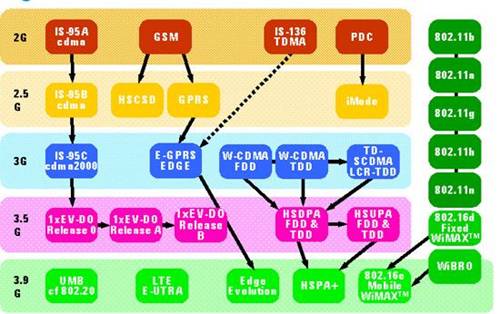Rearden LLC filed an application for experimental license with the FCC on May 24. That caught my eye as as it’s the same company that created a splash in 2011 with its announcement of Distributed-Input-Distributed-Output (DIDO) wireless technology, said to achieve capacity 1000-times the Shannon Limit with sub-millisecond latency. The company issued a white paper authored by company president Steve Perlman and the company’s principal scientist Antonio Forenza, but it didn’t have a lot of details for an engineer. DIDO seemed to be a form of network MIMO, whereby each user is served by all base stations in its vicinity through a complex coordination process. (Various forms of network MIMO will be appearing in successive releases of 3GPP’s LTE Advanced specifications.) Aside from the white paper, there are patents that supported the notion of DIDO as network MIMO.
Archive for the ‘Clearwire’ Category
Rearden discloses more experimental details at FCC’s request, plans to use Clearwire spectrum
Friday, June 21st, 2013FCC conditionally approves Google’s ‘confidential’ Mountain View radio experiment
Thursday, March 28th, 2013Today the FCC granted Google’s application to conduct a radio experiment in Mountain View, California. When I looked at the application in January, I noted Google withheld some information it felt was confidential, and I took a crack at trying to figure out what was going on based on available information. A couple of days later, the FCC asked Google to provide additional information, and Google responded. Then things sat with no apparent activity for a couple of months.
The experimental license issued today gives Google the authority it sought: use of the 2524-2546 MHz and 2567-2625 MHz bands. In January I noted those bands might be used by Clearwire. In January the FCC asked Google if it had consent from the license holder. Google responded that it “understands that a grant will be conditioned on coordination with affected licensees, and is engaged in discussions to satisfy that obligation.”
Apparently Google hasn’t furnished such consent to the FCC, as the experimental license contains the following “special condition:”
Prior to operation, licensee must successfully coordinate with existing and future Broadband Radio Service/Educational Broadband Service (BRS/EBS) licensees or lessees (as applicable).
So, the FCC is relying on the honor system, which isn’t unusual for experimental authorizations.
Google responds to FCC request for more info about experimental radio project
Saturday, January 26th, 2013Google’s “confidential” test might be a super-dense LTE network using Clearwire’s spectrum
Wednesday, January 23rd, 2013Google filed an application at the FCC last week seeking permission to conduct testing of an experimental radio system. Portions of the application and accompanying exhibits have been designated confidential and are thus not available to the public. Even the request for confidential treatment has been redacted. Let’s try to infer what’s happening from the information available.
What’s 4G? Whatever you want.
Tuesday, October 26th, 2010On October 21 the ITU announced it had deemed two mobile broadband technologies as IMT-Advanced. They’re LTE-Advanced and WirelessMAN-Advanced (WiMAX Release 2 based on IEEE 802.16m). At the same time the ITU called these “true 4G technologies,” leading some in the trade press to say that marketing of some existing services as 4G is misleading.
No entity is the arbiter of the designations 2G, 3G, or 4G. Even the ITU generally uses these terms parenthetically. It recognizes the lack of consensus on their meaning, and does not say others are wrong. The ITU calls the IMT-Advanced technologies “true 4G,” and they are insofar as ITU has a view of 4G and the two technologies are truly consistent with that view.
In some of these articles, Sprint and Clearwire, to name two examples, catch flack for calling their current WiMAX offering 4G. I’d call it 3.5G, but I can’t say they’re wrong. An ABI Research analyst agrees with Sprint and Clearwire; his view is that everything TDMA is 2G, everything CDMA is 3G, and everything OFDMA is 4G, regardless of data rate. It’s a reasonable argument based on backward compatibility, but I’m not ready to agree. If that or something else ends up being the industry consensus, I won’t object.
Below is a comparison found on the ITU website. It’s generally consistent with my view.
Don’t like these classifications? Make your own. Within reason.
________
UPDATED 11/04/2010
ABI analyst link updated with more current post.
